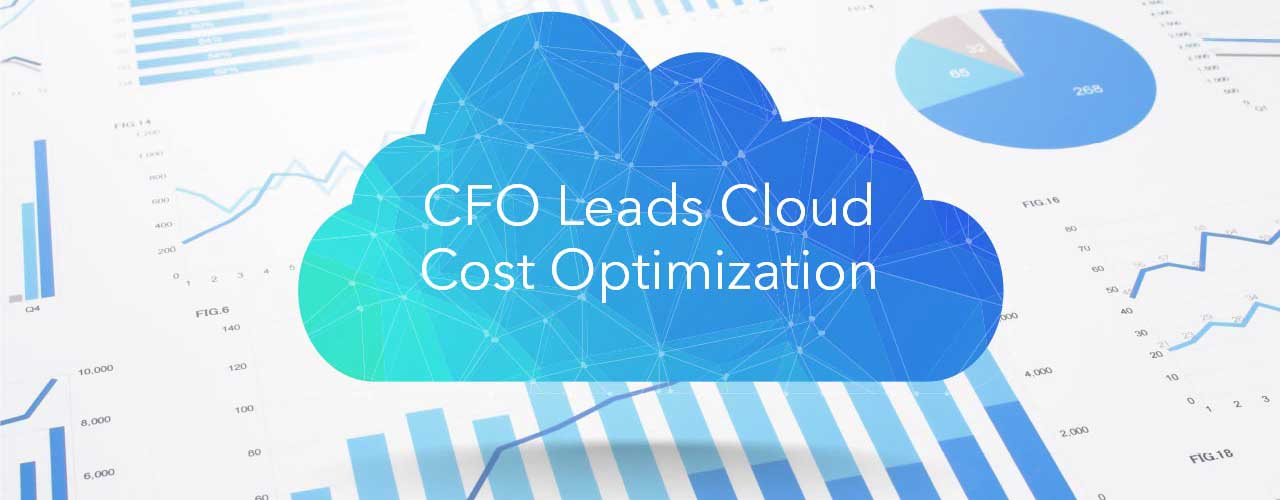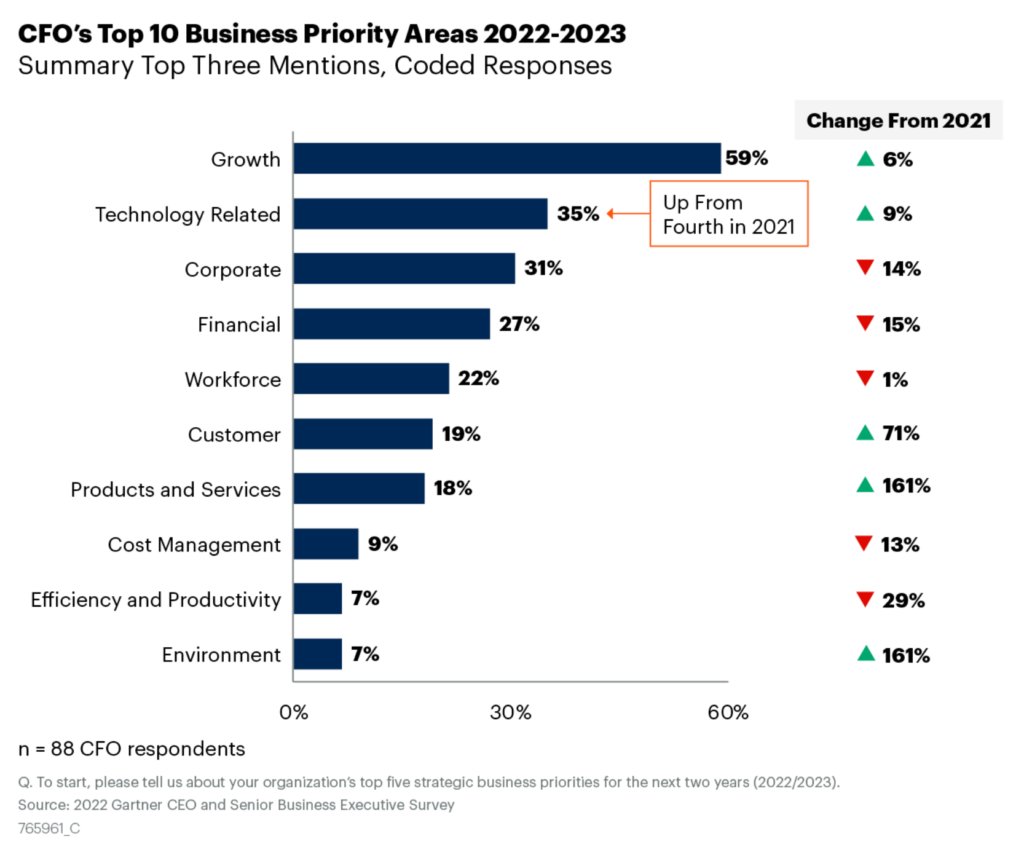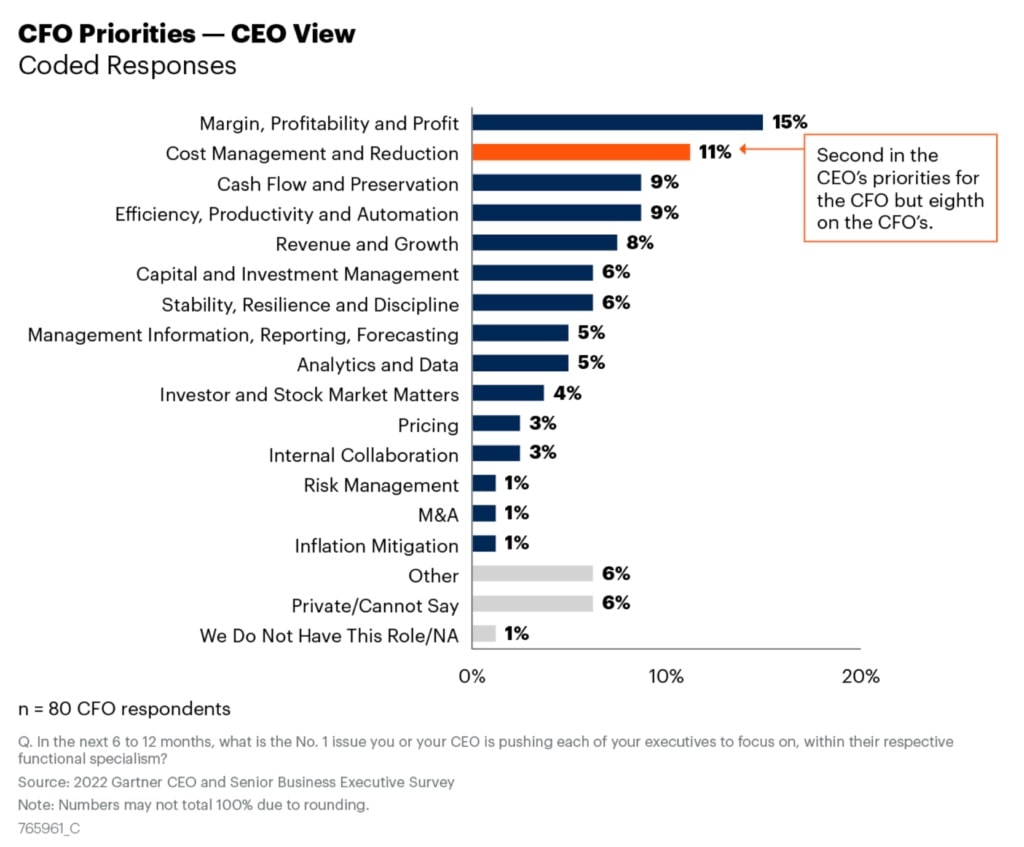
Every company is at some point in its cloud adoption journey. The CTO, Cloud Architect, and the CDO are making decisions that will affect the company’s ability to compete now and in the future. But often, as cloud cost optimization becomes more important, those decisions first go through the CFO.
Far from being just a red-lining budget hawk, today’s CFO must be a strategic leader in the complex world of cloud cost optimization and digital business. To learn more, we spoke to Azul’s own CFO, Peter Maloney, and John Stuart, Vice President of Cloud Operations. We will share more of this conversation in an ebook later this summer.
Azul: Companies are using the cloud’s seemingly endless resources to generate more revenue. As companies grow and scale, so do their cloud bills, until organizations just can’t afford them anymore. It’s a big reason customers approach Azul for help. As companies struggle with cloud cost optimization, is the CFO role getting more strategic and more technical?
Peter: The CFO role is getting more strategic. CFOs are gaining broader experience and becoming more deep technically. They partner with technically savvy team members, such as John, who runs our cloud operations, to help drive strategic decisions, optimizing both technical operations and financial results. As traditional companies are migrating to the cloud, CFOs are quickly learning and realizing there are a lot of great things about going into the cloud.
From a CFO’s perspective, what you spend in the business is like an investment portfolio, and you’re constantly trying to rebalance the portfolio based on the revenue and profitability growth opportunity in the future those investments will provide for the company.
Peter Maloney, CFO, Azul
There’s redundancy, there’s unlimited capacity. CFOs must collaborate with the technical leaders in the company to make critical decisions. For example, can you improve application performance to drive better customer experience and higher revenue, while also improving what percentage of revenue you’re spending in the cloud? Can you tune the product and tune how you use the cloud to drive more revenue and reduce cloud costs and optimize the return on your investments? That’s Nirvana, when you have both better top-line growth and cloud costs efficiencies working in concert.
CIOs and CTOs establish a strategy for using the cloud as a software development model. They understand the risks and rewards of using the cloud.
Chief Data Officers (CDOs) are responsible for a lot of data, and that’s important because applications rely on that data when you move to the cloud or expand your use of the cloud.
Assessing workloads for cost and value and then prioritizing them will require CIOs and CDOs to engage with the budget and operating model in new ways. On the flip side, it will require CFOs to develop technical expertise and an empathy for the business problems being solved that they did not previously need.
There are a lot of great things, but there’s also a cost model that’s different than the way companies have operated historically, and we’re even going through it ourselves.
Can you tune the product and tune how you use the cloud to drive higher top-line growth and cloud cost efficiencies for an optimal return on investments? That’s Nirvana.
Peter Maloney, CFO, Azul
Top priorities for the CFO
Azul: What should top priorities be for the CFO?
Peter: CFOs top priorities include determining and driving the right investments to generate both sustained growth in revenue and profitability. This includes a focus on the company’s operating budget, ensuring sure the budget is consistent with the business model and KPI goals for the company. Whether it’s revenue growth, gross margin, sales and marketing productivity, how much you invest in R&D as a percentage of revenue, or EBITDA and cash flow, CFOs will work closely with functional leaders to have a meaningful influence on optimizing performance.
Cloud use and cloud costs in all companies, not just software companies, are now becoming more material. If companies like Amazon or any other cloud companies make it easy for people to consume, people are going to consume those services unless they’re constrained by something – by a behavioral target, a financial target, you name it. So that’s why the CFO is more interested and wants to have more influence and control. It is becoming more important to leverage the cloud to grow revenue more efficiently. Cloud investments are becoming more material in both product development and cost of goods ultimately impacting the whole business model.

Azul: Explain how CFOs develop short-term goals and long-term objectives, and how they can meet both.
Peter: From a CFO’s perspective, what you spend in the business is like an investment portfolio, and you’re constantly trying to rebalance the portfolio based on the revenue and profitability growth opportunity in the future those investments will provide for the company. As the use of cloud continues to rise, and there’s great benefits for the business, you’ve got to make sure that you have the right priorities. Do you really need to save all that data? Do you really to run all that compute time? And what will be the to return to you?
Did You Know: In Gartner’s 2022 CEO and Senior Business Executive Survey, cost management and reduction was the CEO’s second highest priority for CFOs, but only the eighth highest priority for CFOs.
Gartner
John: People might ask, “Why does cloud computing cost so much?”
Well, let’s tie it back to the business, where the CDO is. The CDO says, “Data is valuable, so retaining the data is required to make informed decisions. The data provides us with the insight and history to help drive conclusions. Storage is cheap.”
The CFO’s going to ask that question of that data officer, then of the different lines of business, and say, “Why are you spending so much on compute?”
Why? Compute is necessary to process the data we have collect and develop the report for the business.
The CFO is not going to say you need to throttle back by 5% or 10%. The CFO is going to say, “How do you get more efficient?”
Peter: Right. The CFO is not going to get into every technical detail. The CFO will use targets and benchmarks to determine whether what you’re spending is appropriate for the health of the business, and then also help focus investment in priorities because you have to make trade-offs. You can’t do everything.
Cloud vendors make it appealing and make operators think they can do everything, but it just costs too much. You know, 12 months free of 750 hours of compute time per month. Then it’s 5GB of storage free for 12 months. And 750 hours per month of free database use. What happens when that isn’t enough?
Cloud usage has become so material, and it appears to have an unlimited feature where the users can go and consume more than they realize. It’s like a kid’s first credit card, and they’re not even seeing the bill, and they’re not paying the bill.
And so you must constantly look at it as an investment portfolio that needs to be linked to the true north of the company. What are you trying to be? How fast are you trying to grow? How profitable are you trying to be? And then it cascades down into cloud usage.
The CFO is not going to say you need to throttle back by 5% or 10%. The CFO is going to say, “How do you get more efficient?”
John Stuart, VP of Cloud Resources, Azul
John: It’s a change in the culture of financial operations. How do CFOs work with other parts of the organization to create the KPIs that show the business value or the per-transaction cost structure that drives that back to the business? It takes time, and it really takes a good product person or business leader to connect those two together and say yep, this is what it costs for us to get there. And usually that’s when the CFO is really aligned closely with the product team.
if you’re more performant and that meant we didn’t lose out on money, there was clearly that connection but it’s a slow process, and it really means that you’ve got a mature CFO that understands technology and a mature product process as well.

CFOs should optimize investments during economic downturns
Azul: What effect does the economic downturn have on a CFO’s priorities and on business priorities?
Peter: A cost-cutting mentality is not good enough. We will most likely head into some type of a slowdown, maybe even recession. Maintaining top-line growth rates will be challenging. There’s going to be some natural hygiene of looking at costs more closely and trying to be more efficient and cost conscious.
But the strongest companies are the ones that go through these tough macroeconomic times and optimize their investment and making the right trade-offs. Say there are products or parts of the business where you believe if you continue to invest the right way, in the medium term or long term you’re going to get greater growth. You must figure out how to make these investments. And that’s what the best companies do.
Because if you think about the value of a company, it truly is about the future cash flows that a company is going to generate. If you’re making the right decisions in tough times, and you’re investing in things that will allow you to grow – hopefully through those tough macroeconomic times – but even faster and better and more sustained after they’re over – you’re going to win. You’re going to create a very valuable company, be able to employ more people, have a better impact on society, and quite frankly just generate better cash flows when growth starts coming back.
Cloud usage has become so material, and it has sort of this unlimited feature where the users can go and consume more than they realize. It’s like a kid’s first credit card, and they’re not even seeing the bill, and they’re not paying the bill.
Peter Maloney, CFO, Azul
Azul: Why do companies have such a hard time getting ahead of cloud costs before they get out of control?
John: If the CFO has not had the sticker shock of getting a random bill and hunted down their operations and engineering teams, it’s just a matter of time.
I could talk to a number of my cohorts out there in the world that have had the same conversation.
Cloud resources are unlimited, according to the engineering team. It’s not a big deal, and engineering teams would always, they’re not rewarded to cut costs. They’re rewarded for delivering products and features and functionality, and with quality.
That’s what they’re driven by, so until somebody comes in and says no, you’ve got to be more cost efficient, they’re going to keep running with it. They’re going to throw hardware at the problem or anything like that. It’s just the natural way of doing it so it comes back to tying it back. Do you know what the cost is for the business to run these transactions and do what you’re doing – downloads, checkouts, everything like that?
If you don’t, it’s a matter of time until 1) you’re going to get the bill, and the question’s going to be asked, “Why are we spending so much? What is it cost per transaction? What does it cost per x?” Whatever that company deems is necessary. And high-growth people are going to mostly say we need it, we need the functionality, we need the features, we’ve got to keep going. But the CFO, especially in this world now, is going to come back and start to go, “Oh, what do you mean? That’s three head count. That’s five head count. That’s 10 head count.”
Azul Java can help improve performance and cloud cost optimization
Azul: What about Azul products should get CFOs excited?
Peter: First, companies spend too much money in the cloud, and that’s been the thrust of our conversation today. Cloud spending has a very significant effect on market capitalization; by some estimates out of control cloud spending weighs down more than a trillion dollars in market value. The cloud offers all this flexibility and scalability, but companies just can’t afford it. Now, Azul Platform Prime enables us to run faster code while using fewer resources, which can lower cloud costs by 50%. If I see that we’re actually going to improve our performance, it’s going to have a downstream effect to improve a lot of other things. As the CFO, I can support that and understand it. And the people who are responsible for Java in the company will say, “I’m going to listen a little bit more.”
However, Azul is attractive to CFOs for more reasons than only lowering your cloud bill.
For example, performance is king when it comes to business applications. Support people will tell you, slow is the same as down. The thing about Prime is, you’re actually going to get a premium product, and you’re going to gain real tangible efficiencies. As a CFO, that is attractive because better performance is going to make our customers more productive. It’s going to make us more efficient. We can use the savings to invest in more engineers and make our business even better.
And finally, Oracle’s licensing model is expensive, onerous and confusing. Oracle forced CFOs to account for higher capital expenditures when it started charging for Java in 2019. No CFO wants to overpay for something like Java, and they really don’t want to have audits hanging over their head all the time. I’ll tell you the way I look at it. I think when you look at our Core product, we offer the world’s best and most comprehensive builds of OpenJDK at up to 70% less cost than Oracle (calculate your potential savings). We can do that because we are the Java experts. We support more versions of Java and lead more OpenJDK projects than any other vendor, including Oracle, and we’ve been doing this for 20 years.
The bottom line is that the yellow brick road to cloud computing is paved with companies that didn’t plan for optimizing their investments and containing costs. There are a lot of pieces to complete that puzzle; but at Azul, we believe that rightsizing resources plays a huge role. And for companies that use Java, investing in Azul gives you more performance and greater efficiency, which pays off when you reinvest that money in people and resources to generate future growth. You can’t save your way to prosperity, but using cloud resources more efficiently to further the business model is a great way to create value. And that’s what the CEO and investors want.
Conclusion
Companies are compelled to use the cloud for its agility, scale and resiliency. But those who fail to control cloud costs experience significant margin pressure, which by some estimates weighs down more than a trillion dollars in market cap. This dynamic is what Andreesen Horowitz calls “The Cloud Paradox,” and it’s a big reason customers approach Azul for help.
Azul helps customers solve The Cloud Paradox using our high-performance Java runtime, Azul Platform Prime, which cuts cloud costs by up to 50 percent.
Faster code = less compute – Improve throughput by up to 2X or more while maintaining service level expectations and improve code execution speed by up to 20%-50% or more, without changing a line of code.
Optimize cloud resources – Leverage the elasticity of the cloud to offload the heavy work of compilation from client JVMs to a scalable, dedicated Cloud Native Compiler service that allows customers to serve the same load with smaller client servers.
Cut infrastructure costs – Slash capital expenses for servers by as much as 50%, cut operating expenses for cloud services, and drive continuous value.




